Sustainable Web Design 2025: SEO, UX, and the Future of Growth

Discover sustainable web design trends in 2025, how to reduce website carbon emissions, optimize SEO, enhance UX, and build a responsible brand.
Sustainable Web Design 2025: An Imperative Trend for the Future

In the context of increasingly severe climate change, sustainable web design is no longer an option but a necessity. Sustainable Web Design is the practice of designing and developing websites with the goal of minimizing negative environmental impact. This includes reducing carbon emissions, conserving energy, and optimizing resources.
As user awareness of environmental issues grows, they are more likely to support businesses and organizations that demonstrate social and environmental responsibility. Adopting sustainable web design not only helps protect the environment but also builds a positive brand image and attracts customers.
Core Elements of Sustainable Web Design

1. Image Optimization
Images often account for a significant portion of a website's file size. Optimizing images is one of the most important steps to minimize the amount of data that needs to be downloaded. Using WebP, a modern image format, and compressing images while maintaining good quality is an effective solution. Also, ensure that the image size matches the display size on the website, avoiding unnecessary downloads of oversized images. Vinawebapp.com, with many years of experience in web design, always focuses on image optimization to provide the best user experience.
2. Code Optimization
Inefficient code can increase page loading time and consume energy. Minimizing redundant code, using gzip to compress text files (HTML, CSS, JavaScript), and optimizing the code structure are necessary measures. Use website performance testing tools to identify code issues and find solutions. The technical team at Vinawebapp.com is always up-to-date with the latest programming techniques to ensure the website's source code is optimized as much as possible.
3. Choosing Environmentally Friendly Hosting
Data centers consume a large amount of energy. Choosing a hosting provider that uses renewable energy (such as solar or wind power) is an effective way to reduce environmental impact. Learn about the environmental policies of the hosting provider before deciding to use their services. Many hosting providers now commit to using renewable energy and reducing carbon emissions.
4. Minimalist Interface Design
A minimalist interface design not only makes the website look modern and professional but also helps reduce the resources needed to download. Limit the use of animations, complex images, and unnecessary components. Focus on providing content in a clear and understandable way. An intuitive, easy-to-navigate design will help users find information quickly and efficiently. Vinawebapp.com always advises customers on the importance of minimalist design and how to apply it to their website.
5. Using Energy-Efficient Fonts and Colors
Some fonts and colors consume more energy than others when displayed on the screen. Choosing simple, easy-to-read fonts and using less energy-intensive colors (e.g., white or light colors) can help reduce environmental impact. Research has shown that some fonts can save up to 30% of energy compared to other fonts.
Impact of Sustainable Web Design on SEO

Sustainable web design is not only good for the environment but also provides many benefits for SEO (Search Engine Optimization). Faster page loading speed is an important ranking factor in Google's algorithm. Websites that load faster tend to rank higher in search results. In addition, sustainable web design also helps improve user experience, increase time on page, and reduce bounce rate, other important factors affecting SEO.
Google is increasingly paying attention to websites that demonstrate social and environmental responsibility. Applying sustainable web design can help build brand credibility and be rated higher by Google.
Impact of Sustainable Web Design on UX

Sustainable web design improves user experience by providing an intuitive, easy-to-use interface and fast page loading speed. Users will not have to wait long to load pages, which helps them have a smooth and uninterrupted browsing experience. Conveying a message about concern for the environment can also make a positive impression on users, especially those who care about environmental issues.
Benefits of Sustainable Web Design for Businesses

Sustainable web design offers many benefits to businesses, including attracting customers interested in environmental issues, building a responsible brand image, and saving energy costs. Customers are increasingly likely to support businesses that demonstrate a commitment to the environment. A sustainable website can help businesses differentiate themselves from competitors and attract potential customers.
Real-World Examples of Sustainable Websites

More and more websites are adopting the principles of sustainable web design. Some typical examples include the websites of environmental non-governmental organizations, renewable energy companies, and socially responsible businesses. These websites often use optimized images, lightweight source code, and environmentally friendly hosting. They also regularly share information about their sustainable activities on the website.
Vinawebapp.com, with its motto of sustainable development, always encourages customers to choose environmentally friendly web design solutions. We believe that a website should not only be beautiful in form but also responsible to the community.
Conclusion

Sustainable web design is not just a trend but an imperative in the current context. It brings many benefits to the environment, SEO, UX, and businesses. Designers and businesses should actively adopt the principles of sustainable web design to contribute to protecting the environment and building a better future. Start today by optimizing images, source code, choosing environmentally friendly hosting, and designing a minimalist interface. Together, we can create a more sustainable web world.

